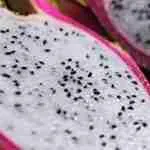Bananas are yellow and curved, we all know that. But what if I told you there is a (very tiny) pink-purple banana variety as well? And what if I told you it’s absolutely delicious?
The Musa Velutina is a species of edible wild banana with a distinct pink-purple color. The fruit is also known as the pink banana, red banana, or hairy banana. It is rich in antioxidants, vitamin C, and vitamin B6.
Eating the fruit could potentially be good for you, as they contain a lot of healthy nutrients. Apart from the vitamins, these bananas are low in calories and relatively high in fiber. They would fit well in most types of diets, and are a perfect snack for vegetarians and vegans.
How Do Purple Bananas Taste?
The pulp of the Musa Velutina or purple banana tastes tangy and sweet. The flavor of this fruit can best be described as a yellow banana mixed with raspberries.
It must be noted that most of the fruit will consist of seeds, so it’s going to be difficult to eat it directly from the tree. It is best to remove the peel, separate the flesh from the seeds, and make a pulp from the remaining fruit.
Below you can find a taste test by YouTube content creator TheSammymann:
Musa Velutina: A Unique Banana
The fact that the Musa Velutina is in a unique color spectrum is not the only special characteristic of this fruit. The reddish to pink-purple banana has a few more traits that might surprise the average banana consumer:
- The pink-purple peel is actually not smooth, but slightly hairy (like kiwi fruit);
- The size of the colored banana is tiny, especially when compared to the large yellow bananas in the supermarket;
- Since it is a wild banana, the seeds are much larger and there is less banana flesh or pulp;
- It is therefore not suitable for mass consumption, as the little amount of edible fruit can best be used in smoothies or juices.

Can You Eat Wild Banana Seeds?
While it is technically possible to eat the seeds of any banana, the large seeds of a wild banana are tough and very hard to chew. The seeds of most wild bananas are therefore considered inedible.
The pink-purple Musa Velutina is also a wild banana — its seeds can best be used to plant new trees. Don’t eat the big seeds, you might just break your teeth. Even your dentist would disapprove of that.
This doesn’t mean that the tiny seeds in a regular yellow banana are bad for you. On the contrary — they are perfectly fine to eat and fully harmless. It doesn’t matter if the fruit is ripe or unripe. So feel free to keep munching on those supermarket bananas.
Where To Find Pink-Purple Bananas
It won’t be easy to find the bananas from the Musa Velutina in the United States (or Europe). You can’t just walk into a supermarket and buy them. Even your local exotic fruit dealer might not have them in stock.
The tree of the Musa Velutina is native to Assam, eastern Himalayas, India, and Southeast Asia. You might also find it growing in some parts of Australia. That’s where you should look for the fruit.
However, it is possible to get your hands on the seeds. They can be grown in most greenhouses, since they are relatively sturdy and easy to grow. If you’re interested in this, you can find the instructions below.
Grow Your Own Purple Bananas
Do you want to get your own supply of pink-purple bananas? Ordering the seeds of the Musa Velutina is very easy, you can just get the seeds on Amazon. The tree grows very quickly in a greenhouse, so you can even get one of these in your own backyard.
If you’re interested in growing this unique tree yourself, here are some basic instructions on how to grow the tree. That way you can harvest your own wild banana crop after only a single year!
Other Weird Banana Species
Apart from the pink bananas discussed in this overview, there are a few more interesting banana varieties that might tickle your fancy. What to think about the Blue Java Banana (Musa acuminata × balbisiana), which has a blue peel and tastes like ice cream?
They might be as blue as most media would want you to believe, but they are still quite special:

Maybe you’re interested in more unique colors? The Red Dacca (Musa acuminata) is a dark red banana that might look overripe to the untrained eye. It’s actually a very red banana species that is super healthy:

But there are many more banana species out there (as well as a world of pink fruit options). From the square-looking Praying Hands banana, to the extremely thick Mysore banana variety. There are so many interesting fruit varieties to be discovered out there!



